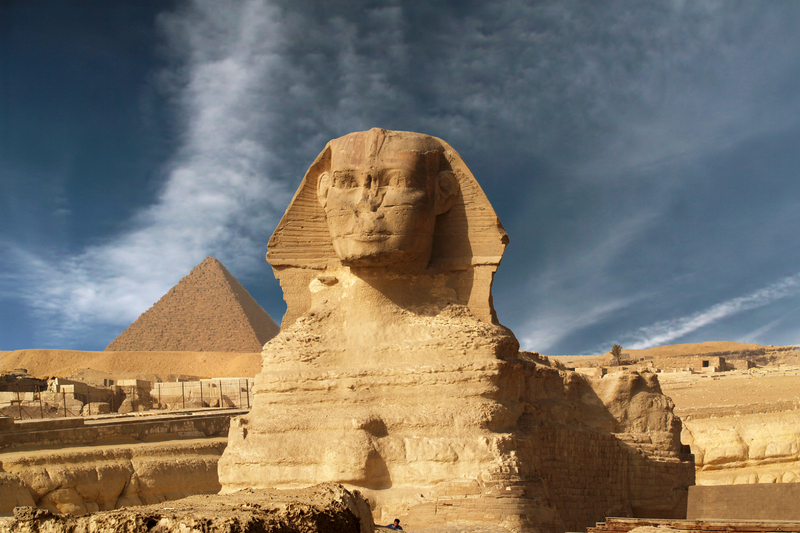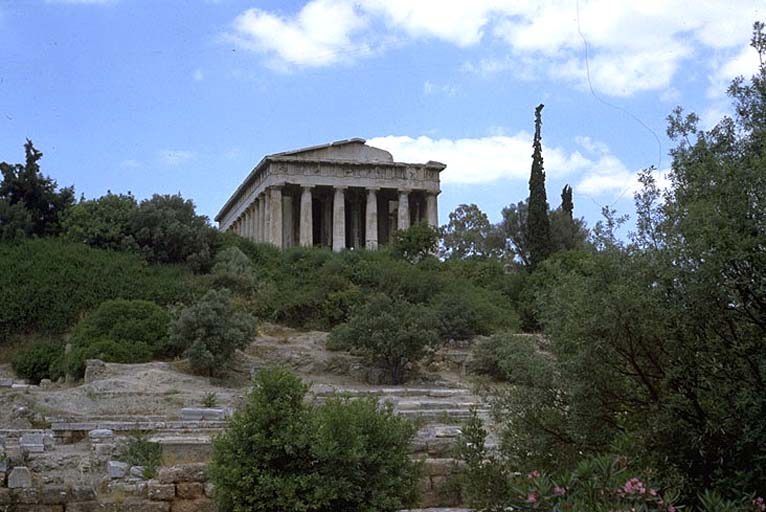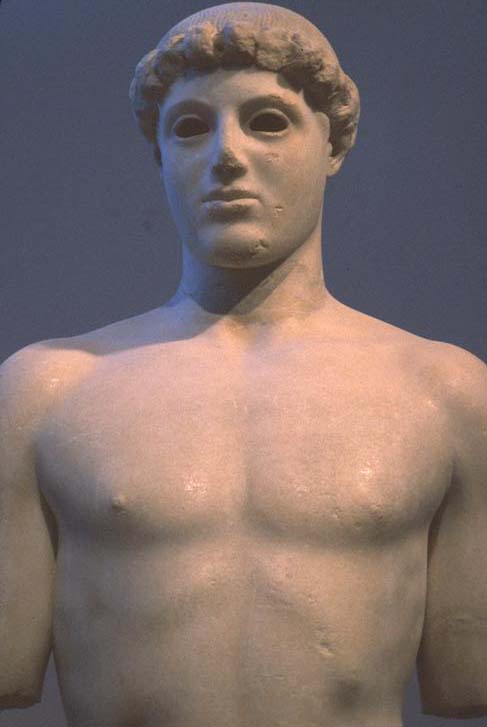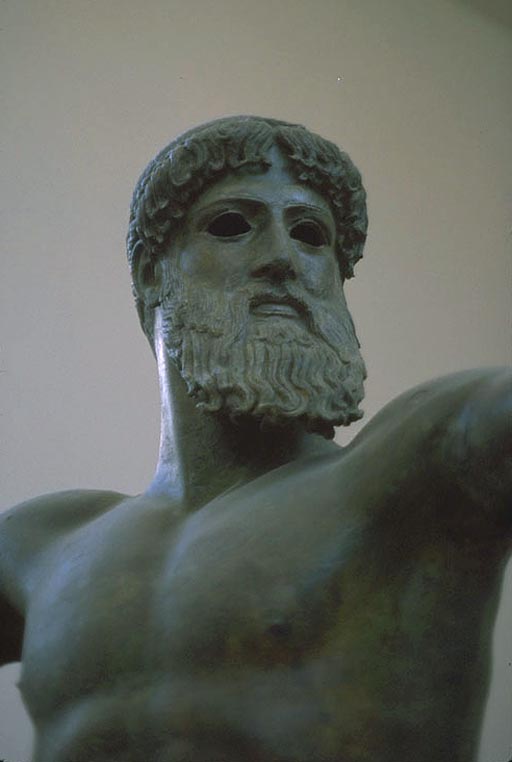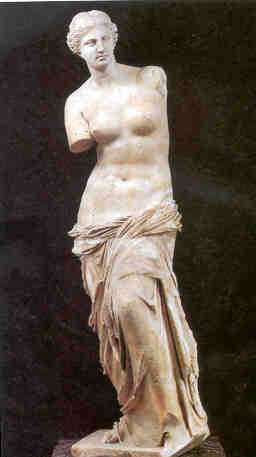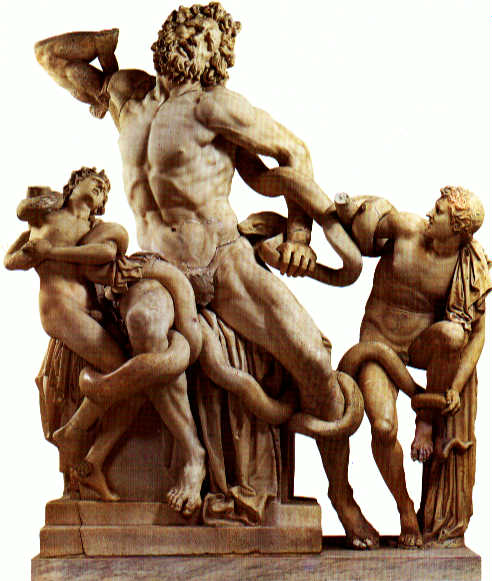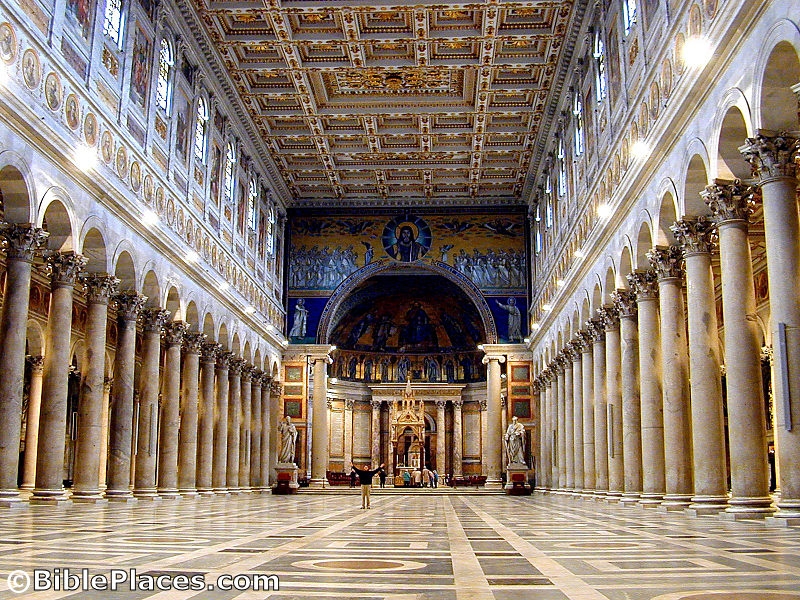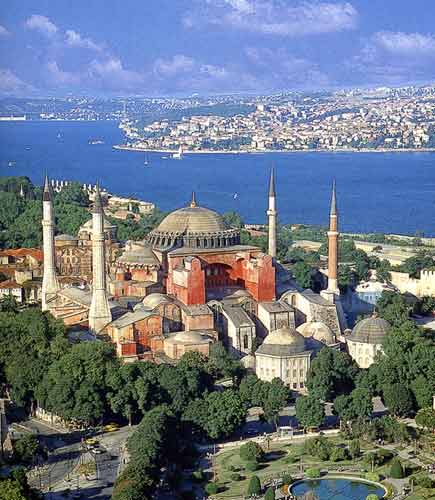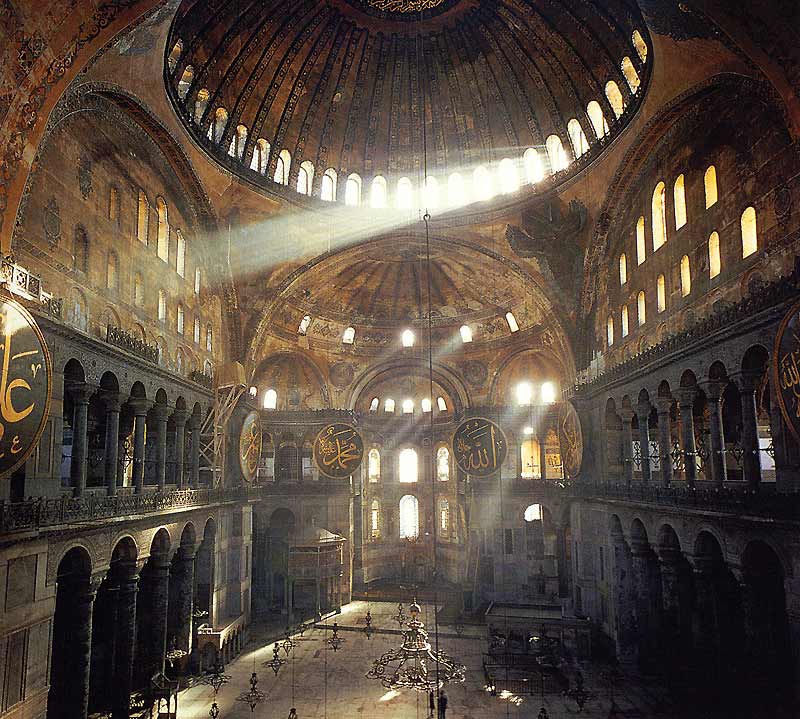The History of Art
Second Grading Period |
|||||
Third Grading Period
|
|||||
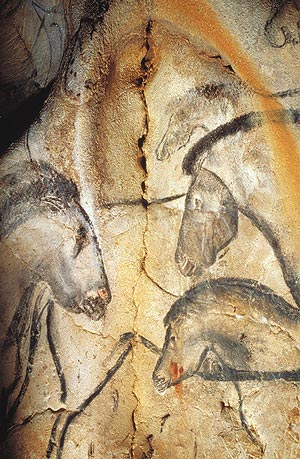
Horse heads, Chauvet Cave. Fourteen different animal species are depicted in the Chauvet Cave. Here, three beautiful horses' heads face one another.
Source: Chauvet Cave (ca. 30,000 B.C.) | Thematic Essay | Heilbrunn Timeline of Art History | The Metropolitan Museum of Art
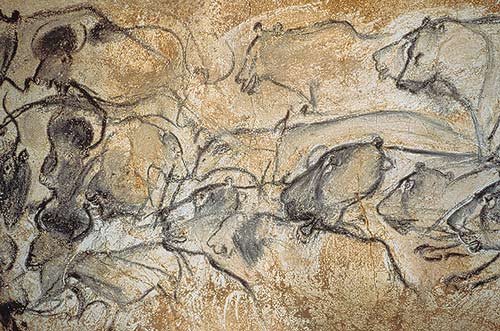
Lions hunting Bison, Chauvet Cave. A pride of lions hunt bison, one of the rarest scenes ever found in Paleolithic art.
Source: Chauvet Cave (ca. 30,000 B.C.) | Thematic Essay | Heilbrunn Timeline of Art History | The Metropolitan Museum of Art
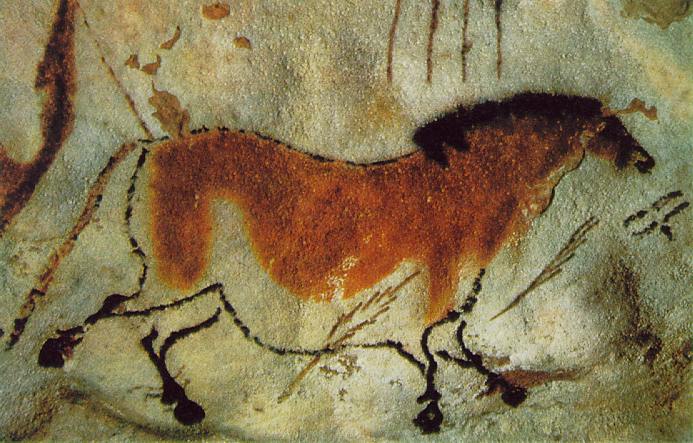
This cave painting from Lascaux includes additional markings which may be representations of arrows, indications of counting or tribal signatures. The blending of colors seen here, such as in the horse's mane blending into the horse's neck, may suggest the paint was blown or 'spit' onto the wall.
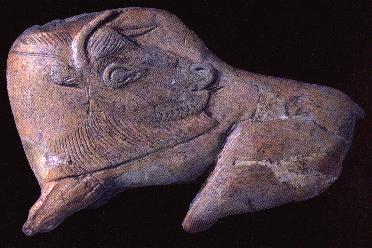
Bison with head turned, from the Dordogne region of France. 4 l/2" length.
The History of Art
Egyptian Art 2929 BC through 343 BC
Greek Art
Greek art began around 2500 b.c. It began in the Cycladic and Minoan prehistorical civilization,
and gave birth to Western classical art in the ancient period (further developing this during the Hellenistic Period)
. It took in influences of Eastern civilizations and the new religion of Orthodox Christianity in the Byzantine era
and absorbed Italian
Greek art was interested in creating the ideal form of all things.
The Greeks invented the Golden Ratio
Temple of Hephaestus ("Theseion"), Athens:
view from east (above the Agora),
ca. 449-444 B.C.E.
Ephebe ("Kritios Boy"): detail, head and torso
ca. 480 B.C.E.
Zeus (or Poseidon) of Cape Artemision (Euboea):
detail, head and shoulders, ca. 460-450 B.C.E.
The "Aphrodite" of Melos, commonly known as the "Venus de Milo",
is a beautiful marble statue now exhibited in the Louvre, Paris. Nothing is known of its sculptor.
Experts date it between 200 and 100 BC.
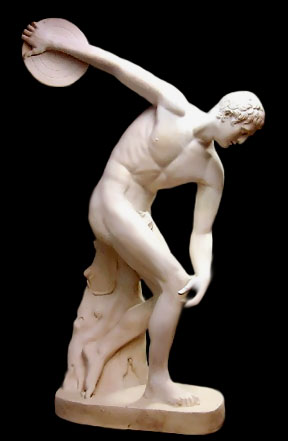
The 'Laocoon Group', which depicts a father and his sons crushed to death by serpents,
illustrates the extremity of physical suffering as represented in sculpture.
Roman
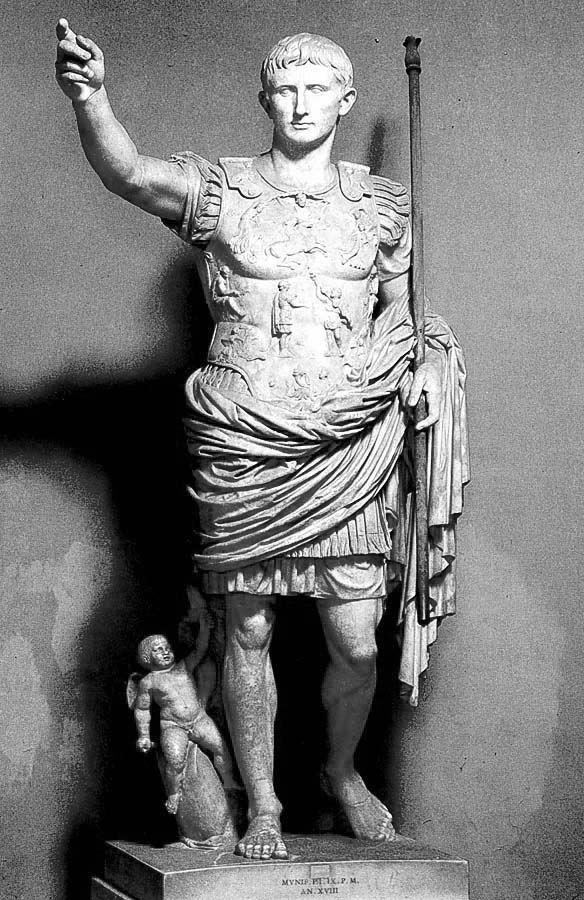
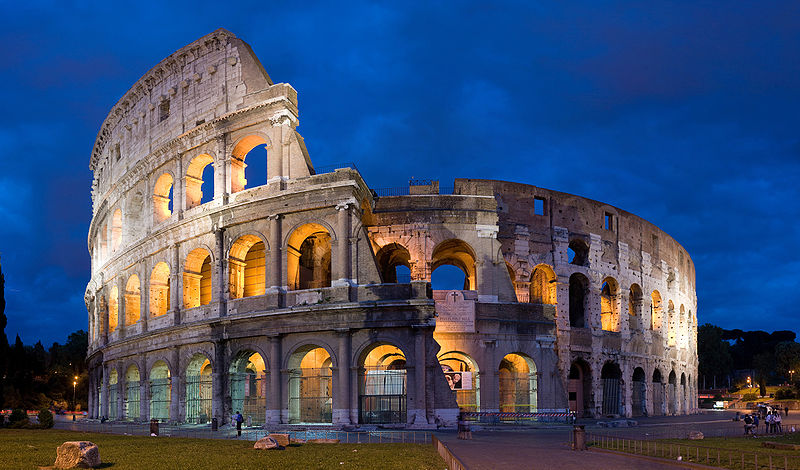
The Colosseum in Rome
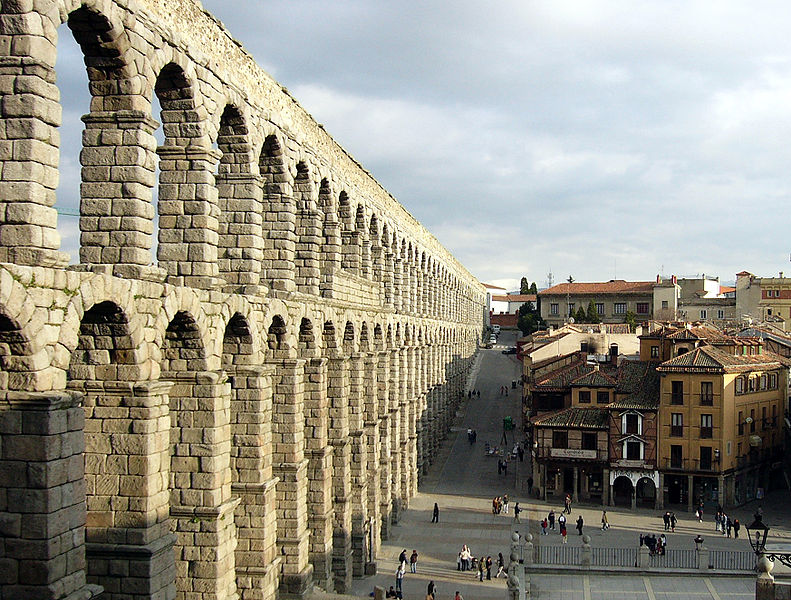
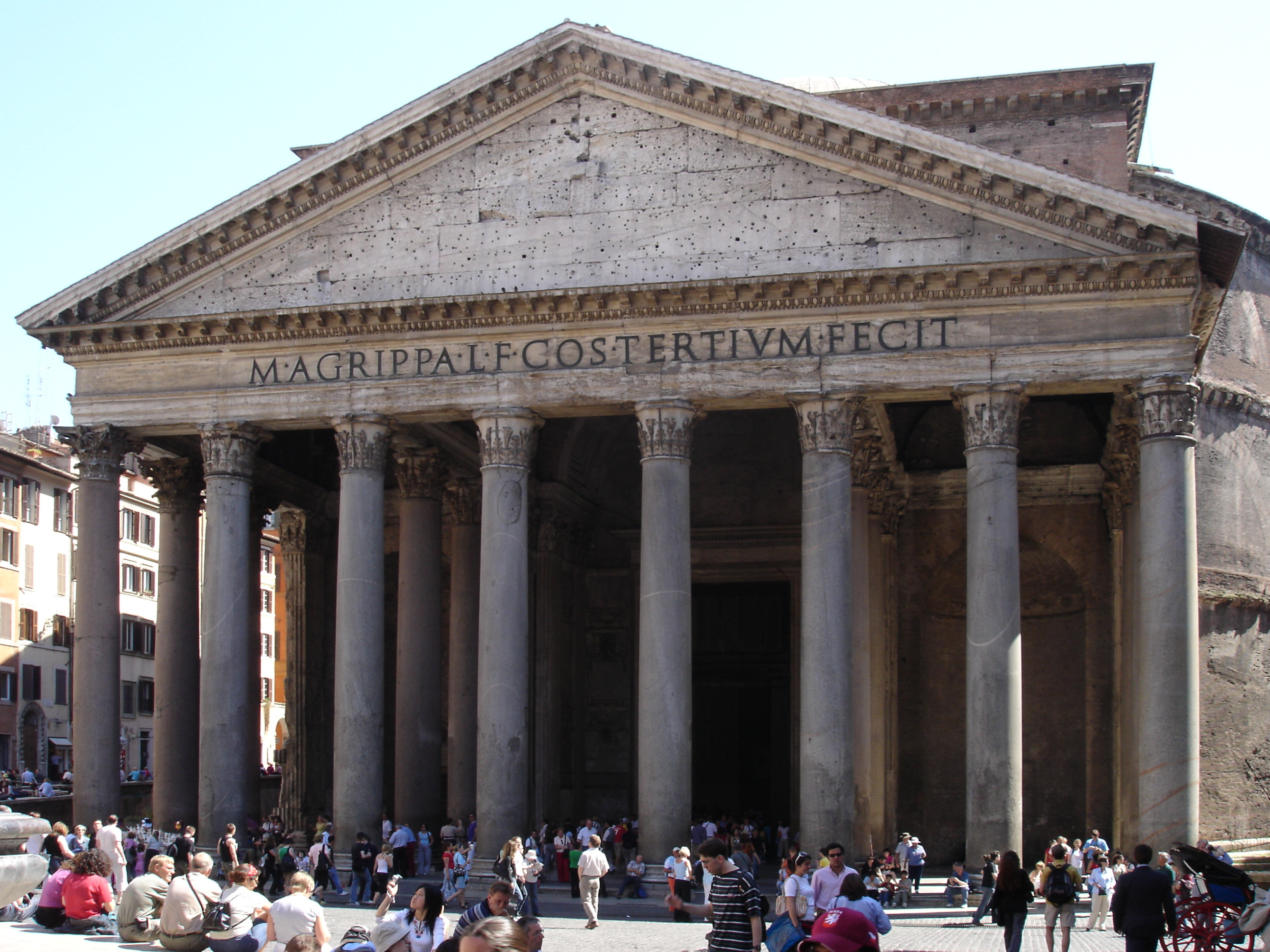
Pantheon Rome
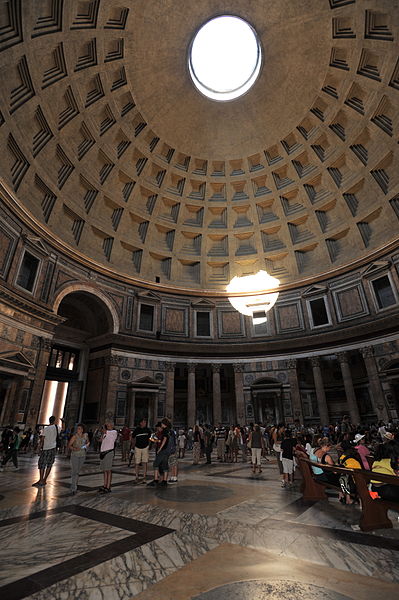
Early Christian ...... Art 313 A.D.
The Catacomb of Saints Peter and Marcellinus - The catacombs functioned primarily as cemeteries.
There may have been as many as 4 million bodies buried in the catacombs of Rome.

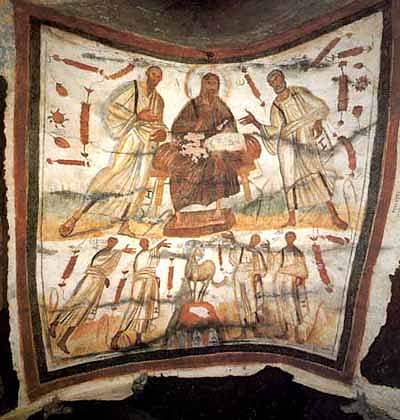
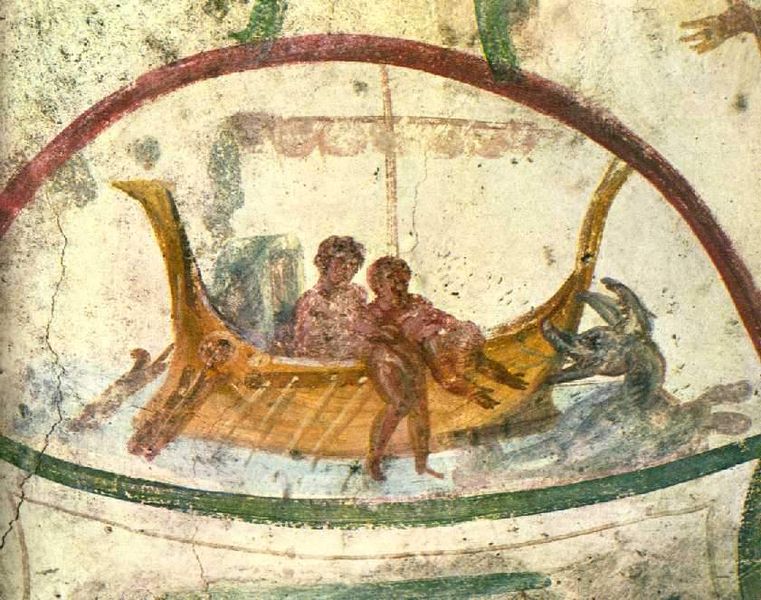
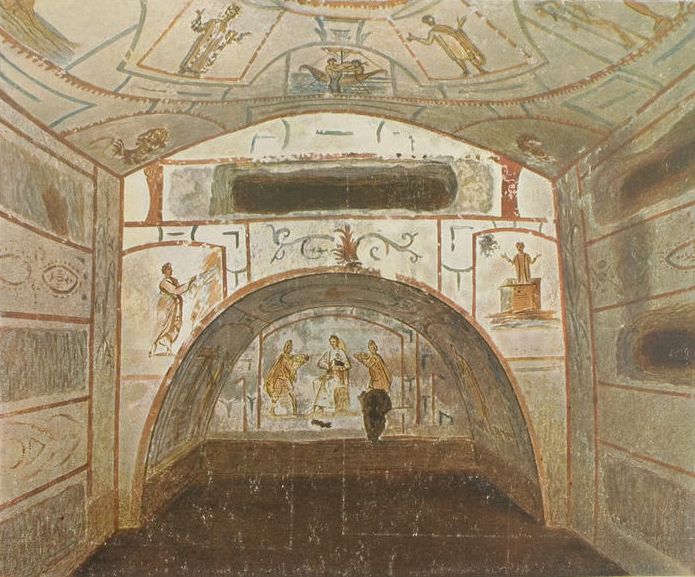
Saint Paul Outside the Walls, Rome Begun in 386 A.D.
Byzantine Art
Artists of the early Christian and Byzantine churches conveyed their message of salvation through mosaics.
The achieved a high degree of expressiveness through the use of glass as opposed to earlier Roman mosaics
that used polished colored stones.
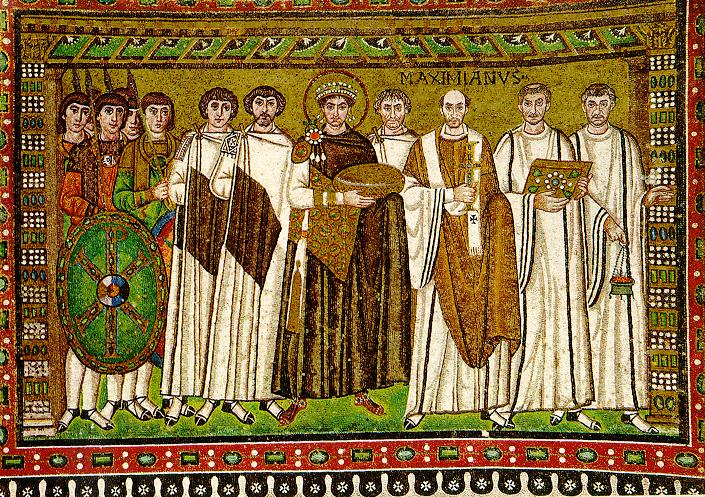
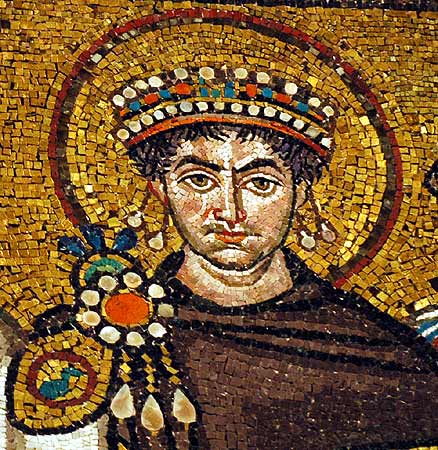
The Emperor Justinian, Emperor of Byzantium at the height of its powers (mosaic in the Basilica di San Vitale in Ravenna).
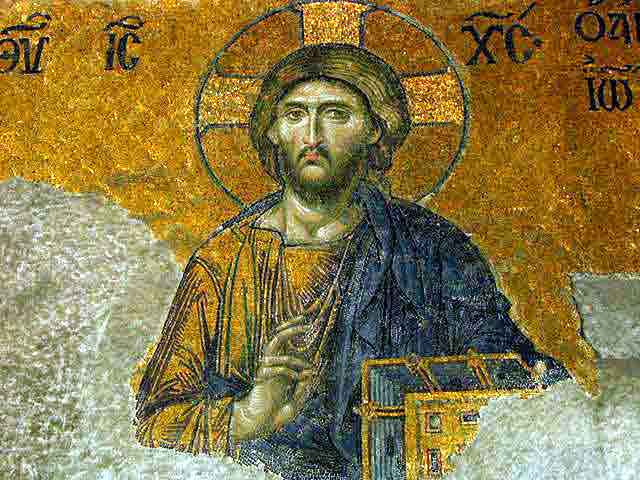
The mosaic face of Jesus, probably one of the best known images in the world.
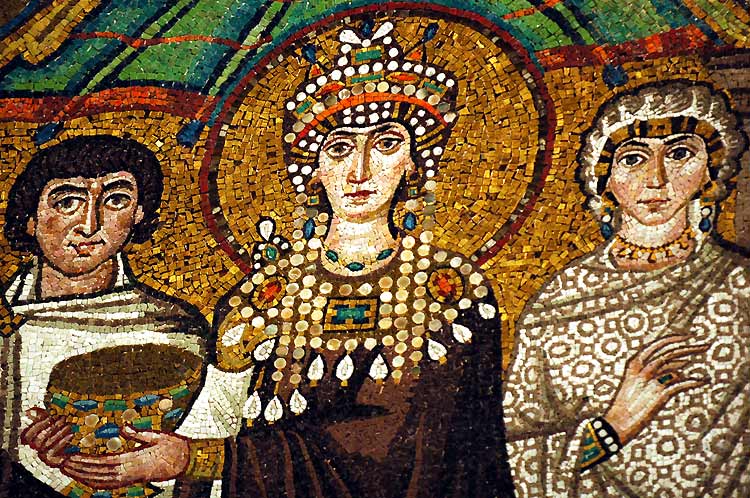
The Empress Theodora, Justinian's wife and love
(mosaic in the Basilica di San Vitale in Ravenna).
She also saved Justinian's throne for him in 532 (early in his 527 - 565 reign)
by facing down a rebellion after he had given up and was preparing to flee .

The Dome of Santa Sophia - Justinian's "Greatest Church in Christendom",
built in the 500s in an earthquake zone, is 107ft in diameter.
Over the years the mighty structure of Santa Sophia has survived earthquakes, fires, crusades,
riots, sieges and impoverished monarchs of both Christian and Moslem persuasion.
On many occasions it has had to be reinforced and buttressed. Even though it is not in good
decorative nick today, it is really remarkable that has survived at all.
Medieval Art

Manuscript Illumination





